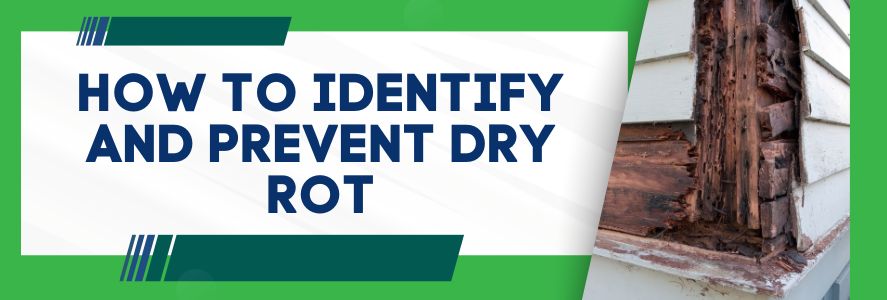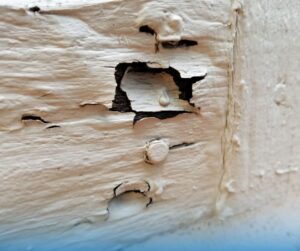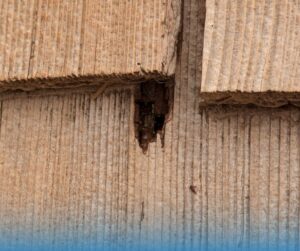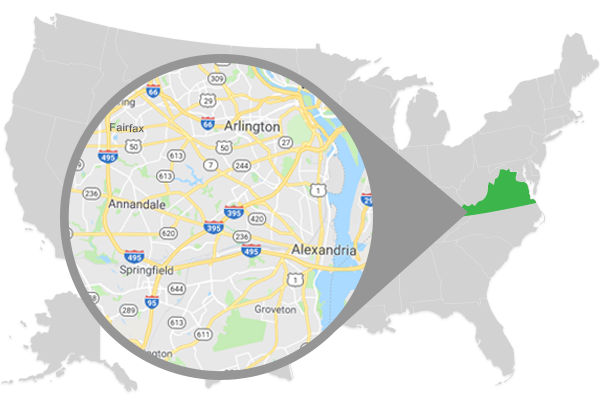How To Identify and Prevent Dry Rot

Despite the name, dry rot is actually caused by an excess amount of moisture breaking down wood fibres. Dry rot isn’t something homeowners should take lightly, as it can compromise the structural integrity of the wood in your home. Understanding how to identify and prevent dry rot can help you safeguard your home against expensive and dangerous damage. Summit Waterproofing Solutions can help, our basement waterproofing, crawl space encapsulation, and moisture control services can help prevent dry rot in your home in Alexandria, Arlington, Fairfax, Fredericksburg, and anywhere else in Northern Virginia.
What is Dry Rot?
Dry rot is a condition where excess moistures breeds fungus on wood that slowly eats away and breaks down the wood fibres, causing a brittle, aged, dried appearance and feel. There are two main types, White Rot and Brown Rot. White Rot typically targets hardwood, is colored white or yellowish, and will have a stringy, spongy appearance and feel. Brown rot gives the wood a checkerboard appearance, as the rot causes the wood to break off into cubes and become dry and powdery.
What Causes Dry Rot?

- Moisture: flooding, groundwater in the crawl space, roof leaks, pipe leaks, condensation, high levels of humidity, and any other source of moisture is the number one cause of dry rot.
- Poor Ventilation: areas like basements or crawl spaces often aren’t well-ventilated, letting moisture and fungus thrive.
- Direct contact between wood and soil: soil becomes saturated with groundwater when it rains, and if the wood in your home is directly touching soil, it can lead to dry rot.
- Lack of regular maintenance: without regular maintenance done on your home, you probably aren’t noticing growth of dry rot in less-visited areas like crawl spaces.
How To Identify Dry Rot

Areas Prone to Dry Rot
Certain areas of the home are more prone to dry rot than others, including:
- Basements and crawl spaces with high humidity
- Bathrooms and kitchens, due to the frequent water use
- Attics and roofs with leaks
- Wooden structures in direct contact with soil
How To Prevent Dry Rot
- Control Moisture: make sure you have proper drainage around the home’s foundation, and fix leaks promptly in roofing, plumbing, and walls. Summit Waterproofing can also help control moisture in the home with our basement waterproofing and crawl space encapsulation services.
- Improve ventilation: Utilize vents, fans, and dehumidifiers to promote air circulation and reduce humidity levels.
- Regular maintenance: seal gaps around windows and doors to prevent water from getting in, maintain gutters and downspouts so they function properly and keep water flowing away from the foundation, and routinely inspect the inside and outside of your home to catch dry rot early
What To Do If You Discover Dry Rot
If you discover something that looks like dry rot in your home, the first step is to assess the damage carefully, as some types of dry rot can be misidentified as termite or carpenter ant damage. Once you’re sure it’s dry rot, it’s important to have the affected wood replaced. After the wood is replaced, getting the moisture under control is crucial to prevent dry rot from affecting the new wood and spreading to other areas of the home. Summit Waterproofing Solutions offers moisture control and waterproofing services to help stop the spread of dry rot, get in touch with us today for a FREE estimate at 703-291-1516!





